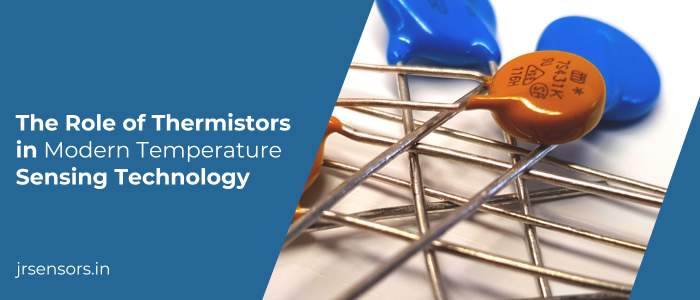
In the ever-evolving landscape of temperature sensing technology, Thermistors emerge as unsung heroes, silently ensuring accuracy and reliability. As we delve into the realm of modern temperature sensing, let’s explore the pivotal role played by Thermistors and their transformative impact.
Have you ever wondered about the magic behind your thermostat’s ability to maintain the perfect temperature? Or how your coffee maker knows when to brew your favorite cup just the way you like it? The answer lies in the intricate world of temperature sensors, with Thermistors standing out as key players.
Unveiling the Thermistor
Thermistors operate on the principle that the resistance of certain materials changes predictably with temperature fluctuations. Most Thermistors are made of ceramic materials containing metal oxides, with the most common being the NTC (Negative Temperature Coefficient) Thermistor. The manufacturing expertise of thermistor manufacturers ensures the precision and quality of these crucial temperature-sensing components.
The Science Behind Thermistors
Thermistors operate on the principle that the resistance of certain materials changes predictably with temperature fluctuations. Most Thermistors are made of ceramic materials containing metal oxides, with the most common being the NTC (Negative Temperature Coefficient) Thermistor. The manufacturing expertise of thermistor manufacturers ensures the precision and quality of these crucial temperature-sensing components.
Versatility in Applications
Temperature sensors equipped with Thermistors find applications in diverse industries. From automotive systems and medical devices to household appliances, Thermistors contribute to maintaining optimal conditions for functionality and safety. The vital role of thermistor manufacturers ensures the seamless integration of these components into various technological applications.
Below is a simplified table outlining the role of thermistors in various modern temperature sensing applications:
| Application | Description |
| Automotive Systems | Engine temperature monitoring, climate control systems |
| Medical Devices | Patient temperature monitoring, incubators |
| Electronics | Overheating protection in electronic circuits |
| HVAC Systems | Temperature control in heating, ventilation, and air conditioning systems |
| Food Industry | Temperature monitoring and control in cooking processes |
| Energy Management Systems | Monitoring temperature in power plants and industrial processes |
| Weather Stations | Outdoor temperature measurement |
| Industrial Automation | Process control and monitoring in manufacturing plants |
| Consumer Electronics | Temperature compensation in batteries, display technologies |
| Aerospace | Temperature sensing in aircraft and spacecraft systems |
Temperature Sensor Online: The Convenience Factor
In today’s fast-paced digital era, the availability of temperature sensors online has revolutionized the way industries and individuals access these critical components. The ease of procuring Thermistors online ensures quick solutions for temperature monitoring needs.
What are the types of thermistors?
Thermistors, a key advancement in modern temperature sensing technology, are primarily categorized into two types based on their resistance-temperature relationship:
- NTC (Negative Temperature Coefficient) Thermistors: Resistance decreases as temperature increases. These are the most common types and are widely used in medical thermistors, consumer electronics, and industrial systems due to their sensitivity and accuracy.
- PTC (Positive Temperature Coefficient) Thermistors: Resistance increases with a rise in temperature. They are ideal for overcurrent protection, heating elements, and aerospace thermistors where controlled temperature rise is critical.
Each type serves distinct roles across various applications, showcasing the versatile function of thermistors in real-world scenarios—from smart thermostats and HVAC units to EV battery monitoring and medical equipment. The uses of thermistors continue to expand with advances in thermistors manufacturing plants and precision engineering.
How does an NTC thermistor work?
An NTC thermistor works on a simple but powerful principle: its electrical resistance decreases as the ambient temperature increases. This thermistor principle makes it ideal for monitoring, controlling, and compensating for temperature changes in sensitive systems.
For example, in a thermostat, the purpose of the thermistor is to detect even the slightest variation in room temperature and send this data to the control system to adjust heating or cooling accordingly. This dynamic function of a thermistor is essential in temperature regulation, particularly in industries like automotive, medical diagnostics, and industrial automation.
NTC thermistor manufacturers, like JR Sensors, produce high-precision components that support thermistor applications in real life, such as coffee machines, air conditioners, and smart wearables, highlighting the application of thermistors in daily life.
How does a PTC thermistor work?
In contrast, a PTC thermistor exhibits an increase in resistance as the temperature rises. This property makes PTC thermistors ideal for use in temperature safety components, such as overcurrent protection and self-regulating heaters.
The role of thermistors in such setups is to act as automatic cut-offs or triggers—once the temperature exceeds a certain threshold, the rising resistance reduces the current flow, thereby preventing overheating or damage.
PTC thermistors are commonly used in industrial equipment, power supplies, motor protection systems, and telecommunication devices, proving their critical role in modern sensing technology and circuit safety.
With the support of leading thermistor manufacturers and continuous innovation in thermistor temperature sensors, their usage in high-demand sectors like aerospace, automotive, and renewable energy continues to grow.
Conclusion
Ever marveled at the invisible threads that weave comfort and efficiency into your daily life? Picture the perfect warmth of your surroundings, the flawless execution of industrial processes, and the refreshing coolness that envelopes you. Enter thermistors, the quiet champions of temperature accuracy, seamlessly integrated into the fabric of our routines.
In this grand tapestry of technological advancement, thermistors play a pivotal role, ensuring our environments are not just comfortable but finely tuned for optimal efficiency. And shining brightly in this narrative is Jrsensors, a distinguished thermistor manufacturer in India. Now, why does the “Made in India” tag matter? Because Jrsensors isn’t just contributing to the symphony; they’re leading the entire orchestra.
Jrsensors, a leading thermistor manufacturer in India, sets itself apart by not only crafting precision in temperature sensing but by directly supplying Original Equipment Manufacturers (OEMs). This direct link empowers them to shape and influence the very core of evolving temperature-sensing technology, ensuring innovation and quality resonate throughout
So, the next time you bask in the comfort of your surroundings, take a moment to appreciate the subtle yet essential role played by thermistors. And in that reflection, acknowledge the strategic significance of companies like Jrsensors, elevating the world of temperature sensing towards a future where precision and efficiency harmoniously go hand in hand.

Burnt Biscuits? Blame the Sensor – The Hot Truth About Your Oven’s Temperature Troubles
If your oven’s cooking like it’s got a mind of its own, your temperature sensor might be the silent saboteur. From half-baked casseroles to scorched cookies, we break down how this little sensor works, why it matters, and how to fix it—without losing your cool (or your dinner). A fun, practical guide that’s just as useful as it is digestible.

Hot Stuff: Why Your Engine Can’t Live Without an Exhaust Temperature Sensor
Think exhaust sensors are just another car part? Think again. These tiny guardians track fiery exhaust temps, protect turbos, keep emissions in check—and even help you pass that dreaded test. Dive into the witty, down-to-earth guide on how EGT sensors silently save your engine (and your wallet) every day. Bonus: You’ll sound like a car guru by the end.

Tiny Tech, Big Impact: Inside the World of Medical Temperature Sensors
Discover how medical temperature sensors work, why they're crucial in healthcare, and how health sensors are transforming modern medical diagnostics. From wearable tech to high-precision devices, learn about the different types of temperature sensor medical devices used today.